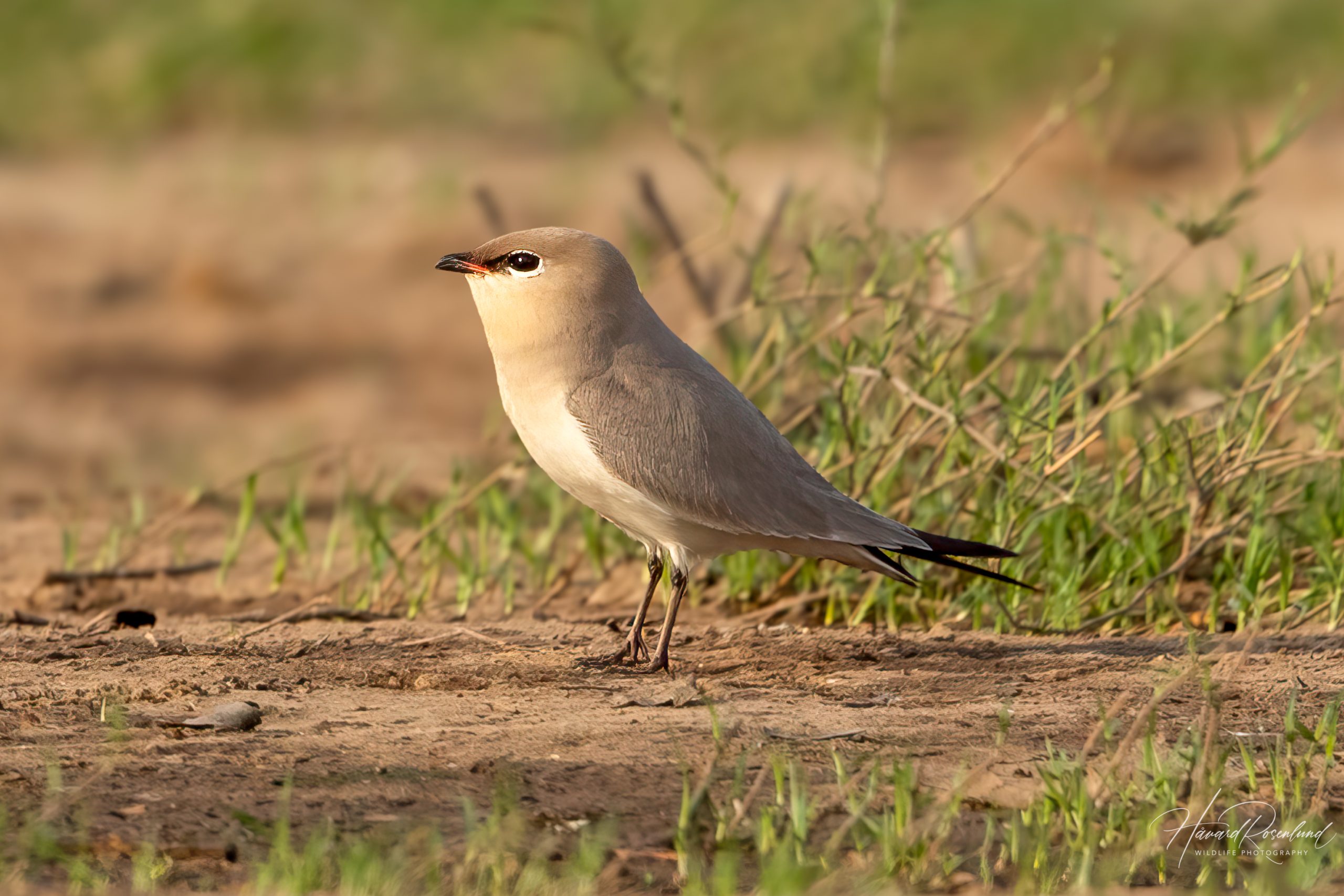Description
The small pratincole (Glareola lactea), also known as little pratincole, is a petite, slender bird found across South Asia, ranging from Pakistan, India, and Nepal to Bangladesh, Myanmar, and parts of Southeast Asia. This species typically measures about 16–19 cm (6.3-7.5 in) in length, with a wingspan of around 42–48 cm (16.5-19.0 in). Its plumage is primarily a soft grey-brown, with a paler underbelly and a distinctive black band running from the eye to the beak, giving it a masked appearance. The wings are long and pointed, displaying a characteristic white trailing edge in flight. The small pratincole is similar in appearance to other pratincoles, but it is distinguishable by its smaller size and lack of more prominent facial markings or throat collar often found in other species, such as the Oriental pratincole (Glareola maldivarum).
Diet & habitat
Small pratincoles are typically found in open habitats near water bodies, such as sandy riverbanks, lakeshores, and coastal areas. They prefer habitats with sparse vegetation, which provide optimal conditions for their feeding strategy. The diet of the small pratincole consists primarily of insects, which it catches on the wing. These birds are agile fliers, often seen skimming low over water or fields, snapping up flies, beetles, and other small invertebrates in flight. They exhibit a form of aerial hawking, a feeding technique where they capture their prey in mid-air.
Behavior
This species is highly gregarious, often forming large flocks during the non-breeding season. They are social birds, and their flocks can sometimes number in the hundreds. Small pratincoles are also known for their distinctive “prrriit” calls, which they use to communicate within the flock. Despite their small size, these birds are quite bold and will often remain close to human activity, especially in areas where they are not heavily disturbed.
Nesting
The breeding season for the small pratincole typically occurs between February and May, coinciding with the dry season in much of its range. These birds nest in simple scrapes on bare ground, often on sandy banks close to water. The nests are rudimentary and may be difficult to spot, blending seamlessly with the surrounding environment. The female usually lays 2–4 eggs, which are cryptically colored to match the sandy substrate. Both parents share incubation duties, which last for about 18–20 days. After hatching, the chicks are precocial, meaning they are relatively mature and mobile from birth. They are able to leave the nest within a few hours and rely on their camouflage and parental care to survive until they can fly, usually within 25–30 days.
Status
The small pratincole is classified as least concern by the IUCN Red List. Although it is widespread and common within its range, local populations can be affected by habitat degradation, particularly due to riverbank alteration and increased human activity in their nesting areas. However, the species is not currently considered to be at significant risk of decline.







